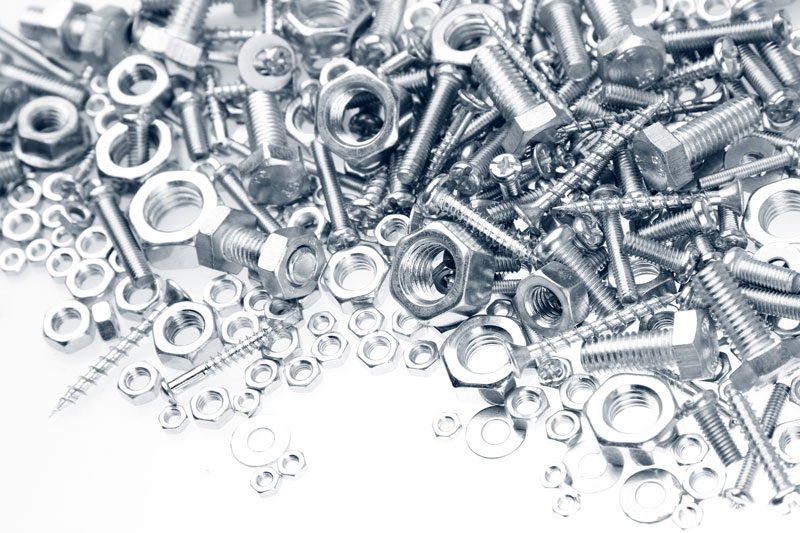
Fasteners, like bolts and screws, have been in use for thousands of years, going back to the Roman Empire. Since this era, fasteners have been used to help build military equipment, furniture, and even clothing. If you’re in the world of construction, you need at least a basic understanding of how fasteners work.
Here are the 4 main types of fasteners that you need to know.
1. Bolts
Bolts can be used on their own or in tandem with nuts. Bolts are usually snugly fit into a slot with a nut at the end that holds two pieces of material together. Bolts are made of metal and are usually intended to be fastened on a permanent basis.
The shaft is straight with a uniform diameter.
Some precision cut bolts will be made for a specific hole. If that hole is tapped for the correct size, meaning the threading matches the bolt perfectly, there is no need for a nut at the other end. The nut is essentially built into the material that is being fastened.
2. Screws
Screws are most commonly found in wood construction but can be found in every type of industry fastening any material. Screws are meant to be added in places where they are intended to cut through the material.
Screws are tapered and tend to start off smaller at the end and get wider near the head.
Screws aren’t intended to be used with nuts. They’re often a variable width so that a nut wouldn’t fit over them.
In fact, screws are meant to more or less create their nut. As they are screwed into a piece of material, the cutting threads of a screw create the thread for it to fit in. Screws are put into material that can be cut into again and again.
3. Nuts
Nuts are an important accompaniment to bolts, allowing for the precise fitting of pieces together with bolts. Otherwise, bolts would hang loosely without their good friend, the nut.
Nuts come in a variety of standard sizes and can be put on with a socket wrench or a pair of pliers.
Nuts are meant to perfectly accompany the threads of the bolt so that they can fit through pieces of material where a hole has already been cut.
4. Rivets
Rivets are a more permanent solution than screws or nuts and bolts. Rivets are placed with a specialized tool that pops the rivet into place in a uniform manner.
Rivets can’t be removed and replaced. Once a rivet is removed, a new rivet must take its place.
Rivets are used on denim material to fasten tough seams together. Rivets are also used on roofing, siding, and planes instead of nuts, which might fall off due to the vibration of the plane as it flies or hits turbulence.
Types Of Fasteners Depend on the Types of Jobs
Even within the construction industry, there are thousands of applications for fasteners of every type. Knowing which types of fasteners to use in various situations will determine the success of your construction job.
If you want to be sure you are using your fasteners correctly, then follow our guide to drilling.
Automated Fastening Systems has been in the business of high-quality tools and fasteners since 1982. We stock a wide variety of specialty fasteners, anchors, power tools and accessories for commercial as well as residential construction. Our years of experience and our highly trained sales staff help us to determine the proper tool or fastener for your job.




